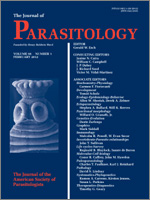The apicomplexan parasite Cryptosporidium parvum is an important cause of diarrhea in humans and cattle, and it can persistently infect immunocompromised hosts. No consistently effective parasite-specific pharmaceuticals or immunotherapies for control of cryptosporidiosis are presently available. The innate immune system represents the first line of host defense against a range of infectious agents, including parasitic protozoa. Several types of antimicrobial peptides and proteins, collectively referred to herein as biocides, constitute a major effector component of this system. In the present study, we evaluated lactoferrin, lactoferrin hydrolysate, 5 cationic peptides (lactoferricin B, cathelicidin LL37, indolicidin, β-defensin 1, β-defensin 2), lysozyme, and 2 phospholipases (phospholipase A2, and phosphatidylinositol-specific phospholipase C) for anti-cryptosporidial activity. The biocides were evaluated either alone or in combination with 3E2, a monoclonal antibody (MAb) against C. parvum that inhibits sporozoite attachment and invasion. Sporozoite viability and infectivity were used as indices of anti-cryptosporidial activity in vitro. All biocides except lactoferrin had a significant effect on sporozoite viability and infectivity. Lactoferrin hydrolysate and each of the 5 cationic peptides were highly parasiticidal and strongly reduced sporozoite infectivity. While each phospholipase also had parasiticidal activity, it was significantly less than that of lactoferrin hydrolysate and each of the cationic peptides. However, each phospholipase reduced sporozoite infectivity comparably to that observed with lactoferrin hydrolysate and the cationic peptides. Moreover, when 3 of the cationic peptides (cathelicidin LL37, β-defensin 1, and β-defensin 2) were individually combined with MAb 3E2, a significantly greater reduction of sporozoite infectivity was observed over that by 3E2 alone. In contrast, reduction of sporozoite infectivity by a combination of either phospholipase with MAb 3E2 was no greater than that by 3E2 alone. These collective observations suggest that cationic peptides and phospholipases neutralize C. parvum by mechanisms that are predominantly either parasiticidal or non-parasiticidal, respectively.
How to translate text using browser tools
1 February 2012
Phospholipases and Cationic Peptides Inhibit Cryptosporidium parvum Sporozoite Infectivity by Parasiticidal and Non-Parasiticidal Mechanisms
Stéphane Carryn,
Deborah A. Schaefer,
Michael. Imboden,
E. Jane. Homan,
Robert D. Bremel,
Michael W. Riggs
ACCESS THE FULL ARTICLE

Journal of Parasitology
Vol. 98 • No. 1
February 2012
Vol. 98 • No. 1
February 2012




